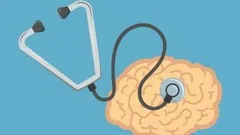
Neuroscience and Neuroimaging 
This specialisation provides a comprehensive overview of neuroscience and neuroimaging, combining the best of four courses into one learning experience. Students will gain an understanding of the brain and its functions, as well as the tools used to study it. ▼
ADVERTISEMENT
Course Feature
![]() Cost:
Cost:
Free Trial
![]() Provider:
Provider:
Coursera
![]() Certificate:
Certificate:
No Information
![]() Language:
Language:
English
Course Overview
❗The content presented here is sourced directly from Coursera platform. For comprehensive course details, including enrollment information, simply click on the 'Go to class' link on our website.
Updated in [March 06th, 2023]
This course provides an introduction to the field of neuroscience and neuroimaging. Students will learn about the design, structure, and acquisition of fMRI data, as well as fMRI artefacts and different types of noise. They will also learn how to read and write brain images in NIfTI format, and discover Magnetic Resonance Spectroscopy. By the end of the course, students will have a better understanding of the neuroscience and neuroimaging field.
[Applications]
After completing this course, students should be able to apply their knowledge of neuroscience and neuroimaging to a variety of contexts. They should be able to identify and interpret fMRI data, understand the different types of noise and artefacts, and be able to read and write brain images in NIfTI format. Additionally, they should be able to apply Magnetic Resonance Spectroscopy to their research.
[Career Paths]
1. Neuroimaging Scientist: Neuroimaging Scientists use fMRI and other imaging techniques to study the brain and its functions. They analyze data to identify patterns and correlations between brain activity and behavior. They also develop new imaging techniques and methods to improve the accuracy and reliability of data. This field is rapidly growing and is expected to continue to expand as new technologies and methods are developed.
2. Neuropsychologist: Neuropsychologists use neuroimaging and other techniques to study the relationship between the brain and behavior. They use this information to diagnose and treat mental health disorders, as well as to develop interventions and treatments for neurological conditions. This field is expected to grow as more research is conducted on the brain and its functions.
3. Neurosurgeon: Neurosurgeons use neuroimaging and other techniques to diagnose and treat neurological conditions. They use imaging to identify areas of the brain that need to be operated on, and they use neurosurgical techniques to perform the surgery. This field is expected to grow as new technologies and techniques are developed to improve the accuracy and safety of neurosurgery.
4. Neuroinformatics Specialist: Neuroinformatics Specialists use neuroimaging and other techniques to analyze and interpret data from the brain. They use this information to develop algorithms and software to help researchers and clinicians better understand the brain and its functions. This field is expected to grow as more data is collected and analyzed, and as new technologies and methods are developed.
[Education Paths]
1. Bachelor of Science in Neuroscience: This degree program provides students with a comprehensive understanding of the brain and nervous system, including the anatomy, physiology, and biochemistry of the brain. Students will also learn about the development of the nervous system, the effects of drugs and other substances on the brain, and the diagnosis and treatment of neurological disorders. This degree program is becoming increasingly popular as the field of neuroscience continues to grow and develop.
2. Master of Science in Neuroimaging: This degree program focuses on the use of imaging technologies to study the brain and nervous system. Students will learn about the different types of imaging techniques, such as magnetic resonance imaging (MRI), computed tomography (CT), and positron emission tomography (PET). They will also learn about the analysis of imaging data and the interpretation of results. This degree program is becoming increasingly popular as neuroimaging technologies become more advanced and widely used.
3. Doctor of Philosophy in Neuroscience: This degree program provides students with an in-depth understanding of the brain and nervous system. Students will learn about the anatomy, physiology, and biochemistry of the brain, as well as the development of the nervous system, the effects of drugs and other substances on the brain, and the diagnosis and treatment of neurological disorders. This degree program is becoming increasingly popular as the field of neuroscience continues to grow and develop.
4. Master of Science in Cognitive Neuroscience: This degree program focuses on the study of the brain and its relationship to behavior. Students will learn about the cognitive processes involved in learning, memory, language, and decision-making. They will also learn about the neural basis of behavior, including the effects of drugs and other substances on the brain. This degree program is becoming increasingly popular as the field of cognitive neuroscience continues to grow and develop.
Course Syllabus
Fundamental Neuroscience for Neuroimaging
Principles of fMRI
Introduction to Neurohacking In R
Course Provider

Provider Coursera's Stats at AZClass
Discussion and Reviews
0.0 (Based on 0 reviews)
Explore Similar Online Courses

Sustainable Aviation: The Route to Climate-Neutral Aviation

The ABCs of public speaking - A Masterclass in Storytelling & presentation art

Python for Informatics: Exploring Information

Social Network Analysis

Introduction to Systematic Review and Meta-Analysis

The Analytics Edge

DCO042 - Python For Informatics

Causal Diagrams: Draw Your Assumptions Before Your Conclusions

Whole genome sequencing of bacterial genomes - tools and applications

Control Your Subconscious Mind: Neuroscience Hidden Secrets

Perform an Excellent Neurological Bedside Exam

Brain and Behavioral Science Fundamentals
 Related Categories
Related Categories
 Popular Providers
Popular Providers
Quiz
 Submitted Sucessfully
Submitted Sucessfully
1. What type of data is acquired in fMRI?
2. What format is used to read and write brain images?
3. What type of noise can be present in fMRI data?


Start your review of Neuroscience and Neuroimaging